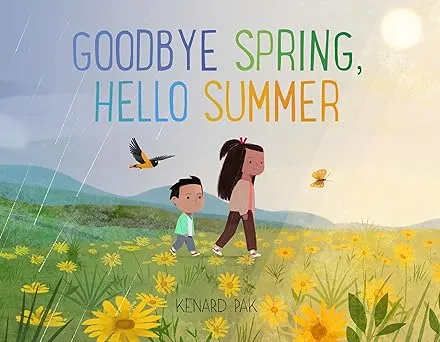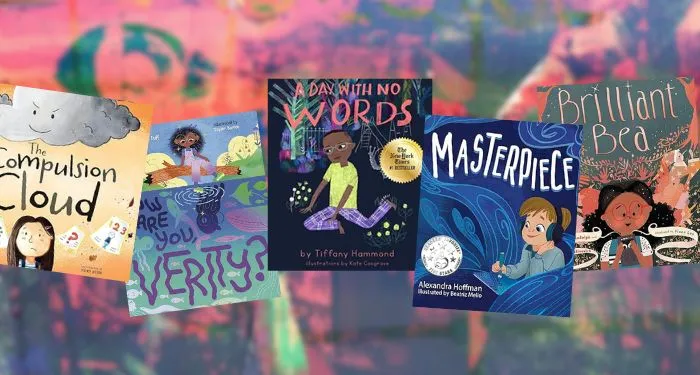1.
On January 12, 1904, the Herero people of German Southwest Africa—today’s Namibia—launched a series of attacks on scattered German farms in the territory. The Herero, a pastoral group of about 80,000, depended on their vast cattle herds for their economic, social, and cultural life, but the German settlers who had begun to arrive in the late nineteenth century increasingly encroached on their grazing lands.
The rebels destroyed many of the farms and killed more than a hundred settlers, mostly sparing women and children. For the settlers the rebellion served as a final proof of the need to eradicate the Herero, whom they described as “baboons.” Unable to restore order, the German governor appealed to Berlin, which sent some 10,000 soldiers. By August they had crushed the Herero fighters. In October the German commander, Lieutenant General Lothar von Trotha, issued what has come to be known as his Vernichtungsbefehl (extermination order) to those who remained:
The Herero are German subjects no longer. They have killed, stolen, cut off the ears and other parts of the body of wounded soldiers, and now are too cowardly to want to fight any longer…. The Herero nation must now leave the country. If it refuses, I shall compel it to do so with the big cannon. Any Herero found inside the German frontier, with or without a gun or cattle, will be executed. I shall spare neither women nor children.
Most of the Herero were shot or died of thirst and hunger in the desert to which they had been expelled. Several thousand were taken to forced labor camps.1
For many decades the public and historians alike ignored this first genocide of the twentieth century. Germany’s famous Vergangenheitsbewältigung (coming to terms with or overcoming the past) was about the Holocaust, not long-forgotten colonial crimes. Only in 2021 did the German government officially apologize for “the suffering, inhumanity and pain inflicted on the tens of thousands of innocent men, women and children by Germany during the war in what is today Namibia.” It also pledged over a billion euros in reparations, although the distribution of this money remains contentious, not least because the Germans negotiated with the Namibian government rather than with the Herero themselves.
That remote genocide at the dawn of the twentieth century shares some remarkable similarities with the campaign of ethnic cleansing and annihilation prosecuted by Israel in Gaza. Israel saw the Hamas attack of October 7, 2023, in much the same way that the Germans saw the Herero attack 119 years earlier: as confirmation that the militant group was utterly savage and barbaric, that resistance to Israeli occupation would always incline toward murder, and that Gaza’s Palestinian population as a whole should be removed from the moral universe of civilization. “Human animals must be treated as such,” the Israeli major general Ghassan Alian (who is Druze) said shortly after the attack, echoing several other Israeli officials, including former defense minister Yoav Gallant. “There will be no electricity and no water [in Gaza], there will only be destruction. You wanted hell, you will get hell,” Alian said in an Arabic-language video message directed to Hamas as well as the residents of Gaza. Over the next seventeen months Israeli forces killed more than 50,000 Palestinians, over 70 percent of whom are estimated to have been civilians, maimed well over 100,000, and imposed on the remaining population conditions of inhuman deprivation, suffering, and pain. A cease-fire that went into effect on January 19 ended abruptly on March 18, when Israel refused to move on to the second phase of its agreement with Hamas and launched a series of unilateral attacks that have already killed hundreds more Palestinian civilians.
But from another perspective the events of 1904 and 2023 are less symmetrical. The Germans could justify the genocide of the Herero because they viewed them as savages, and they forgot about it because it was perpetrated far from Europe on a group generally unknown outside southwest Africa. The Israelis are perpetrating a genocide in Gaza because they perceive Palestinians as savages, but they have justified it as a response to another potential genocide that would be akin to the Holocaust, carried out by Hamas militants who were rehearsing for another Final Solution. Former prime minister Naftali Bennett was one of many who insisted that “we are fighting Nazis.” Dina Porat, a Holocaust historian, wrote in Haaretz on October 21, 2023, that Hamas “cultivates a burning hatred for the devil they created in their imagination, as Nazi ideology did in its time.” In a poll conducted in Israel in May 2024, more than half the respondents said that the Hamas attack could be compared to the Holocaust.
The genocide of the Herero was part of the murderous violence to which European colonizers subjected indigenous populations the world over. As Aimé Césaire wrote in 1950, white Europeans paid notice only when Hitler “applied to Europe colonialist procedures which until then had been reserved exclusively for” colonized populations elsewhere. They had “tolerated that Nazism…absolved it, shut their eyes to it, legitimized it”—until it came to them as a choc en retour under Nazi rule.
It is a different matter whether Césaire’s disciple Frantz Fanon was correct when he suggested that, though surely “the Jews are harassed…hunted down, exterminated, cremated,” their genocide could nonetheless be summed up as nothing more than “little family quarrels,” a case of whites murdering whites. Quite apart from the millions of Jews with non-European backgrounds, even Jews of European descent were, and to some extent still are, not as white as other whites, and their whiteness, for whatever it’s worth, may be tenuous and conditional, as Rachel Shabi notes in Off-White. Even as many “European-Jewish communities…have been folded into white majorities across the West,” she argues, “there is a lingering ambivalence.” The very fact of having been “separate at first and subsequently soaked up into the defining majority” makes Jewish whiteness feel “contingent and attenuated.”
Nonetheless, it was surely in part because the genocide of the Jews happened in Europe and left so many visible traces that Germans and other Europeans failed to repress and marginalize it as they had that of the Herero—failed, that is, to draw what the Germans call a Schlussstrich (closing line) relegating it to the past. Instead the Holocaust became the event that must never be forgotten and must never be allowed to happen again. The process of confronting it both created the mechanism for combating other atrocities, in the form of a regime of international humanitarian law, and set a moral example. For decades, the scholar Enzo Traverso writes in Gaza Faces History, the “civil religion” of Holocaust memory
served as a paradigm for the remembrance of other genocides and crimes against humanity—from the extermination of the Armenians to military dictatorships in Latin America, to the Holodomor famine in Ukraine, to Bosnia, and to the Tutsi genocide in Rwanda.
But at the same time it also offered a kind of carte blanche. In Being Jewish After the Destruction of Gaza, a moving account of his transformation from a strong supporter of Israel into a staunch critic of Zionism, Peter Beinart suggests that in the aftermath of the Holocaust a sense of “false innocence” came to suffuse “contemporary Jewish life, camouflag[ing] domination as self-defense.” For remembering must have consequences, especially when it comes with an absolute commitment to “never again” allow a Holocaust to happen. And when “never again” becomes not just a slogan but part of a state ideology, when it becomes the prism transforming every threat, every security issue, every challenge to the state’s legitimacy or righteousness into an existential peril, then no holds must be barred to defend those who have already faced annihilation. It is a worldview, Beinart writes, that “offers infinite license to fallible human beings.”
Once Hamas militants are seen as modern-day Nazis, Israel can be imagined as an avenging angel, uprooting its enemies with fire and sword. During my childhood and youth in Israel, the Holocaust was a symbol of shame and denial, an event in which Jews went like sheep to the slaughter. Over the years, as I have grown older, it has become something else entirely: a story of solidarity, pride, and Jewish heroism. It is this sense of “never again” that permits most Jewish Israeli citizens to see themselves as occupying the moral high ground even as they, their army, their sons and daughters, and their grandchildren pulverize every inch of the Gaza Strip. The memory of the Holocaust has, perversely, been enlisted to justify both the eradication of Gaza and the extraordinary silence with which that violence has been met.
If we take into account the killed, the wounded, the thousands buried under the rubble, the thousands of “indirect” deaths due to the destruction of most medical facilities, the thousands of children who will never fully recover from the long-term effects of starvation and trauma, we can undoubtedly conclude that Israel has deliberately subjected the Palestinian people in Gaza, most of whom are refugees from the partition of Palestine in 1948 or their descendants, to “conditions of life calculated to bring about its physical destruction in whole or in part,” as stated in Article II(c) of the 1948 UN Genocide Convention.2 The rest of the world, especially Israel’s Western allies and Jewish communities in Europe and the United States, will have to grapple with this reality for many years. How was it possible, well into the twenty-first century, eighty years after the end of the Holocaust and the creation of an international legal regime meant to prevent such crimes from ever happening again, that the state of Israel—seen and self-described as the answer to the genocide of the Jews—could have carried out a genocide of Palestinians with near-total impunity? How do we face up to the fact that Israel has invoked the Holocaust to shatter the legal order put into place to prevent a repetition of this “crime of crimes”?
2.
The genocide in Gaza is the backdrop to but not necessarily the focus of a series of debates that began before October 7 and have greatly intensified since then. Some of them fixate on the genocide-that-wasn’t rather than the one taking place before our very eyes. The internal Jewish dispute over Gaza has torn apart communities, families, and friendships. In the aftermath of the Hamas attack, many Jews—not just in Israel but in the diaspora—feel that they live under genocidal threat and perceive it as the worst form of betrayal when anyone, let alone one of their coreligionists, says that it is Israel, rather than the Palestinians, perpetrating genocide. To understand the vehemence, rage, and sense of vulnerability engendered by these disputes requires confronting the entire sweep of Israeli and Palestinian history—a challenge that, in various ways, a number of recent books have tried to meet.
In The World After Gaza, Pankaj Mishra begins as early as the nineteenth century. He notes the atmosphere of betrayal and urgency that marked Zionism in the decades before Israel’s creation, empathetically invoking
the torments of the spiritually uprooted man, who according to early Zionist Max Nordau “has lost his home in the ghetto, and…is denied a home in his native land,” [and] could only be healed among his own kind.
We would do well “to examine the condition of powerlessness and marginality that Zionism originally sought to redress,” Mishra writes. It is, he points out, “a condition more often found in the histories of Asia and Africa than of Europe and North America, and still painfully unresolved.” He identifies two conflicting vectors in Zionism: an urge for emancipation, liberation, and dignity, and an impulse toward ethnonationalism that found its expression in a settler colonial project. Like “the Hindus and Muslims of South Asia,” Mishra argues, “the Jews and Arabs of Palestine” might at one point have had various “options of self-determination” at their disposal, only to see them foreclosed by “all the calamities” of the 1940s: “the Second World War, the Holocaust, the stateless and universally unwelcome Jewish refugees, the exhaustion of the British Empire and the nascent Cold War.”
These calamitous circumstances laid the conditions for the United Nations’ partition plan, the war of 1948, the establishment of Israel, and the Nakba—the expulsion of the vast majority of the Palestinian population, about 750,000 people, from what became the Jewish state.3 In asserting its historical and moral right to exist, on May 14, 1948, the new state issued a remarkable document, its “Independence Scroll,” which promised equal rights and dignity to all citizens, including what it termed the “Arab inhabitants.” Had a constitution in the spirit of this declaration followed, it could have created a state based on liberal and democratic principles. That, of course, never happened. No constitution was ever agreed on, and the legal standing of the Declaration of Independence is at best disputed. Even as different versions were being frantically drafted and then finalized by Israel’s first leader, David Ben-Gurion, Jewish militias and later the IDF were engaged in turning the land’s Palestinian majority into a minority through intimidation and violent expulsion.
Zionism instead became Israel’s guiding ideology, under the ambivalent definition the Declaration of Independence provided. Israel, it announced, would be “a Jewish state” that would nonetheless “ensure complete equality of social and political rights to all its inhabitants irrespective of religion, race or sex”—a promise, as far as Palestinian citizens were concerned, mostly honored in the breach. Tellingly, the word “democracy” did not appear in the declaration. Only in 1992 did the Knesset pass a Basic Law defining Israel as a Jewish and democratic state, as part of an incremental, uncompleted, and beleaguered effort by some Israeli lawmakers and the Israeli Supreme Court to create a set of constitutional laws in lieu of a constitution—a process arguably reversed by the 2018 Basic Law establishing that “the right to exercise national self-determination in the State of Israel is unique to the Jewish people.”
What, then, was the difference between creating a state for the Jews and creating a Jewish state? In his provocative study To Be a Jewish State, Yaacov Yadgar argues that in certain respects these are “two distinct, contesting, and even contradictory political projects.” A Jewish state is one whose character is defined through Judaism, whereas a state for the Jews is simply one with a majority-Jewish population, defined ethnically rather than by its relationship to the Jewish religion. The state envisioned by the founder of political Zionism, Theodor Herzl, would be liberal and could be secular. A Jewish state, on the other hand, would profess the Jewish religion as the very essence of its identity.
The contradictions between these two views of the state, as Yadgar shows, became glaringly obvious in a famous ruling by the Israeli Supreme Court justice Aharon Barak on the unconstitutionality of allocating state land for settlements only to Jews. The ruling asserted that “the return of the Jewish people to its homeland is derived from the values of the state of Israel as both a Jewish and democratic state”—values that “demand equality between religions and nationalities.” How could such a ruling square with the fact that Israel’s Law of Return, as elaborated by the Supreme Court, privileges granting citizenship to Jews over all other religions and nationalities, or with the fact that the same court sanctioned the settlement project in the West Bank?
It is hard not to conclude that the liberal secular definition of Zionism is as exclusionary as the religious one and that its professions of equality and democracy for all have been repeatedly negated by its focus on privileging one ethnicity over another. Between the coming-of-age of the first generation of native-born Israelis—to which I belong—and that of the present generation, the state has become increasingly Jewish, as religion has assumed a larger place in society, culture, and politics. But it has also become progressively obsessed with being the state of the Jews—and only of the Jews, as the 2018 Nation-State Law made clear. The result has been the steady erosion of democratic values in public life, even among the Jewish population—let alone Israel’s Palestinian citizens.
For all its sophistication, To Be a Jewish State has very little to say about Palestinians, who constitute about a fifth of Israeli citizens; another five million live under Israeli occupation in the West Bank and Gaza. And yet it is impossible to understand what it means for Israel to be a Jewish state without taking into account that equal numbers of Jews and Palestinians live in the territory of “historic Palestine.” By now “the Israeli-Palestinian conflict” is a misnomer for the relationship between them. As the veteran Palestinian human rights lawyer Raja Shehadeh shows in What Does Israel Fear from Palestine?, Israel grew increasingly unwilling to make territorial concessions after the fall of communist dictatorships in 1989, the dismantling of the apartheid regime in South Africa in 1994, and the assassination in 1995 of Prime Minister Yitzhak Rabin, who sought some form of compromise with the Palestinians—however imperfect—and detested the settler movement that has since come to dominate the country’s politics.
The Madrid Conference of 1991, which tried to revive the peace process, offered a “glimmer of hope,” Shehadeh writes. But the Oslo Accords that followed “proved to be a bitter disappointment,” simply “repackaging the occupation” and “keeping the majority of the land under Israeli de facto sovereignty.” Reading Shehadeh’s book against Yadgar’s makes one wonder whether a Jewish state extending from the river to the sea cannot but be an apartheid state if it fails to realize the promise of its own Declaration of Independence.
In his forthcoming Hebrew-language book תיבמ שוביכ (Occupied from Within), the civil rights lawyer Michael Sfard—the grandson of the renowned Polish Jewish sociologist Zygmunt Bauman, author of Modernity and the Holocaust (1989)—explains in great detail how he came to be convinced, after lengthy deliberation, that the Israeli occupation is indeed an apartheid regime. As he points out, under international law apartheid is a system of rule and a crime. Historically it is related to the racist regime in South Africa, but as a legal concept it does not necessarily rely on a well-articulated racial ideology.
Instead the 1998 Rome Statute, which established the International Criminal Court, defines “the crime of apartheid” as
inhumane acts…committed in the context of an institutionalized regime of systematic oppression and domination by one racial group over any other racial group…with the intention of maintaining that regime.
(Sfard explains that international law defines the term “racial group” using sociopolitical rather than biological categories: it includes not just race and skin color but also national and ethnic origin.) Usually such regimes are maintained through systematic discrimination over rights and resources. To designate a system as apartheid, one needs to show that the “inhumane acts” in question are not temporary but designed to perpetuate the control and oppression of the inferior group—indeed to make them permanent. “One must turn off the lights, block one’s ears, and lower all the blinds,” Sfard writes, “to avoid the conclusion that Israeli rule in the occupied territories” meets that definition. Having argued a number of human rights cases before Israel’s Supreme Court, Sfard also concludes that over the decades, that very institution has been instrumental in implementing apartheid, not only “by consistently evading a response to the question of the settlements’ legality under international law” but also by allowing the settlers to continue seizing land from the Palestinian population and by sanctioning the blatantly illegal “diversion of the occupied territory’s resources to the settlers.” The court, he writes,
sanctioned a policy of targeted assassination of (Palestinian) terrorism suspects; it certified a widespread practice of expulsion of (Palestinian) opponents of the regime, who fight against the occupation, to Lebanon and Jordan; it allowed confiscation of land (from Palestinian communities) on a vast scale in order to build settlements; it certified hundreds of cases of collective, barbarous, literary medieval punishment of the families of (Palestinian) terror suspects by demolishing their houses…it certified thousands of arrests without trial (of Palestinians); it determined that searches (in Palestinian homes) and arrests of (Palestinian) suspects by decision of an army commander without a court order are legal; it enabled the maintenance of an administrative prevention of traveling abroad for hundreds of thousands (of Palestinians); it sanctioned and facilitated the cruel siege of almost two decades of the population of Gaza (yes, yes, all Palestinian); and it oversaw the operation of a separate legal system for Israelis living in the West Bank.
Margaret Olin, a scholar of religious studies and an accomplished photographer, and David Shulman, a distinguished Indologist and frequent contributor to The New York Review, have spent years engaged in grassroots activism to protect Palestinian shepherds and farmers from Jewish settlers and the IDF, especially in the South Hebron Hills. In The Bitter Landscapes of Palestine, they offer an insider’s view of what is happening there.4 The book’s photographs show the beauty of the landscape, the reality of the Palestinian lives in the region—which appear organically connected to it—and the callous, brutal disruption of those lives by the Israeli settlers and soldiers bent on eradicating them.
The Palestinian shepherds bring to mind imaginary scenes of biblical Israelites. The settlers look like hybrids of hooligans and religious zealots, engaged in some divinely sanctioned rite of stoning and beating the people of that land. The soldiers often look bored, scrolling indifferently on their smartphones, but they are dressed to kill in battle gear among the sheep and the ruins of the shepherds’ shacks.
The realities of such a system can appear with extreme clarity to foreign visitors, unencumbered as they are by prior knowledge or bias. The American Jewish Committee has attacked the American essayist Ta-Nehisi Coates for comparing the Palestinian experience under occupation to Jim Crow, arguing that he is not familiar enough with the complexities of the region. But it did not take Coates long, when he visited the West Bank in May 2023, to grasp that one population there was living under democratic laws and another under arbitrary military rule. Describing a visit to Hebron, he noticed how “Israeli soldiers exercised total control over all movement through the town…stopping and interrogating according to their whim.” At one point, he writes in The Message,
I walked out to buy some goods from a shopkeeper. But before I could get there, a soldier walked out from a checkpoint, blocked my path, and asked me to state my religion. He looked at me skeptically when I told him I did not have one and asked for my parents’ religion. When I told him they were not religious either, he rolled his eyes and asked about my grandparents. When I told him they were Christian, he allowed me to pass.
That soldier, he notes, was Black. “In fact,” he points out, “there were many ‘Black’ soldiers everywhere lording their power over the Palestinians, many of whom would, in America, have been seen as ‘white.’” This reminds him
of something I have long known, something I’ve written and spoken about, but still was stunned to see here in such stark detail: that race is a species of power and nothing else…. I knew here, in this moment, how I would have fallen in the hierarchy of power if I had told that Black soldier that I was a Muslim. And on that street so far from home, I suddenly felt that I had traveled through time as much as through space.
In summer 2015 I went with my twenty-year-old daughter, who grew up in the United States, on a trip to Hebron organized by the NGO Breaking the Silence, a group of former IDF soldiers determined to expose the evils of the occupation they had previously enforced. Save for a single meeting with Jewish and Palestinian activists a few years earlier, I had not been to the occupied territories since my army service in the 1970s.
In Hebron we saw how the military had emptied the town’s once-thriving center of its Palestinian population and blocked it off for use only by the Jewish settlers who had taken over. We also saw the contempt with which troops treated the local Arabs—the true owners of the place—and the arrogant conduct of settlers protected by heavily armed soldiers. In a park named after Meir Kahane, the racist rabbi and founder of the fascist Kach party, we saw a shrine built for Baruch Goldstein, a physician who in February 1994 massacred twenty-nine worshipers and injured more than a hundred others in the Cave of the Patriarchs, which also serves as a mosque—an event that sparked the suicide bombing campaign Hamas launched that April. The inscription on Goldstein’s grave enthuses that this mass murderer—revered by Israel’s newly reinstated minister of national security, Itamar Ben-Gvir—“gave his soul for the Jewish people, its Torah and its land, ‘of clean hands and a pure heart.’”
For my daughter, who had internalized a quite different view of Israel in the US, the sheer cruelty and heartlessness of the occupation was simply shocking. A state that allowed this only a few miles from what is supposed to be “the only democracy in the Middle East,” we agreed, had lost its moral compass; a Jewish population that allowed this abomination just across the “separation wall” had lost its conscience. This was eight years before October 7.
3.
There is abundant information about what has been happening in Gaza since that day, although reporting from the ground has been difficult and hazardous. If you want a detailed, day-by-day account of how the IDF’s bombing campaign and subsequent ground incursion into Gaza has been experienced by the local population, Atef Abu Saif’s Don’t Look Left is essential reading. Even in the rare mainstream American media reports that discuss Palestinians in Gaza with relative sympathy, names and personal stories are rarely mentioned—the precise opposite of reports about the victims of the Hamas massacre and their families. Abu Saif fills that gap, chronicling the random, cruel destruction inflicted by the IDF on members of his family and his closest friends.
Abu Saif is a minister in the Palestinian Authority who was visiting his childhood neighborhood of Jabalia with his teenage son when the war broke out. Rather than writing any kind of remote political history, he describes the daily lives and frequent deaths of regular people—how they speak, what they eat, what they dream, and how their lives, never comfortable or particularly hopeful, are shredded by aerial bombs, warship fire, artillery shells, tanks, and drones. He tells us, for instance, about Wissam, his twenty-three-year-old niece, who lost both legs and a hand in a bombing attack on October 16 that killed most of her family; after two months she and her sister Widdad were finally evacuated to a hospital in Egypt.
Abu Saif and his son got out of Gaza at the end of December 2023. For the next year the carnage continued throughout the Strip. In October 2024 the surgeon Feroze Sidhwa, who worked in Gaza for two weeks in March and April, wrote in The New York Times that he and forty-three of his colleagues had seen multiple preteen children shot in the head or chest. Israeli forces have targeted journalists and media staff in Gaza—as of this March, 162 have been reported killed—as well as medical professionals. The UN Office for the Coordination of Humanitarian Affairs reported that by early December 2024 only seventeen of Gaza’s thirty-six hospitals remained even partially functional. By then, according to Doctors Without Borders (Médecins Sans Frontières, or MSF), over a thousand health workers had been killed. By early January, the WHO’s register of detained health workers was just shy of three hundred. Israeli attacks have killed a total of nine MSF staffers since the beginning of the war. On March 21 it was reported that the IDF had bombed the Turkish hospital near the Netzarim Corridor, which separates North Gaza from the rest of the Strip.
Several doctors, as the Office of the UN High Commissioner for Human Rights reported in September 2024, are known to have died in Israeli detention. CNN reported that the head of al-Shifa, Gaza’s largest hospital, claimed that he had been repeatedly tortured during his seven months in Israeli detention. (He was eventually released with no charges.) In December 2024 the IDF detained the director of Gaza’s Kamal Adwan Hospital, Hussam Abu Safia, and took him to the notorious Sde Teiman military camp, where, his lawyer told Al Jazeera, he was subjected to various forms of torture and inhumane treatment. He still has not been released from Israeli custody.
North Gaza, including Jabalia, has been turned into a sea of rubble with US-made explosives, many of them two-thousand-pound “dumb” bombs designed to inflict vast and indiscriminate damage. An Israeli filmmaker who interviewed reservists returning from Gaza told me that the devastation they saw reminded them of photos of Hiroshima. (He has yet to find Israeli or European funding to finish the film.) Between October 2024 and January 2025, the operation in North Gaza appeared to follow the so-called generals’ plan, a proposal to empty the top third of the Strip of its population using a combination of military action and starvation. Reports emerged that the area around the Netzarim Corridor had become a “kill zone” where IDF troops would shoot anyone they saw. Many testimonies from the Strip describe roaming dogs feeding on unburied bodies. When the former IDF chief of staff and defense minister Moshe “Bogie” Ya’alon described this operation as ethnic cleansing, he was attacked by the right but also by the opposition, whose leaders denounced him for suggesting that the IDF could no longer be described as “the most moral army in the world.”
But “ethnic cleansing” is not exactly an accurate phrase for the IDF’s actions. The Strip’s population has been not only deprived of food, water, medical care, and sanitation but continually targeted: people displaced from one area end up in another, where they are again attacked or displaced. Ever since the IDF marched into Rafah in May 2024 and displaced about a million Palestinians yet again to South Gaza, where hundreds of thousands still live in vast tent cities without any reasonable infrastructure, it has been impossible to describe the Israeli operation as anything but genocidal. The repeated displacements, the ceaseless attacks on areas designated as safe zones, and the systematic destruction of housing, infrastructure, hospitals, universities, schools, places of worship, museums, and other sites of collective memory and identity—all of this indicates an intent, already expressed in the early days of the campaign, to eradicate Palestinian physical and cultural existence in Gaza entirely and make the Strip uninhabitable. Since the resumption of Israeli military activities, reports have emerged that Israel may be planning to take over the entire Strip and subject it to military rule, possibly with support from the Trump administration, hoping to force the population to leave altogether.
One afternoon in early December 2024 I was sitting with a friend of many decades at a popular café facing the Habima Theatre in Tel Aviv. I looked around the busy café and asked, “What does a society engaged in genocide look like?” “Like this,” we agreed. Some of the younger men and women sipping espressos may have just come back from service in Gaza or Lebanon. Some may have lost friends or family on October 7 or in the subsequent fighting. They had all been subjected to air-raid sirens in the middle of the day or while fast asleep. On the surface, however, everything looked excruciatingly normal, even though Gaza was only forty-five miles south.
I had come to Israel to visit my new twin grandchildren, born eleven months earlier. But I also wanted to meet friends and acquaintances, to gauge how the mood had changed since my last visit there in June. I had been struck then by the almost total inability of Jewish Israelis—not least liberal or left-wing people I have long known—to even acknowledge the horrors that the IDF was perpetrating in Gaza. Now I perceived a certain change. More people seemed aware of the extraordinary devastation being wreaked there, less often from the TV news than from newspaper articles and social media videos posted by IDF reservists. The Israelis I talked to had little desire for revenge or more violence. But neither did they exhibit much empathy. In its place was a kind of resignation, indifference, and despair.
Regular demonstrations still called for a hostage deal, and some also opposed the government or advocated a cease-fire. But their numbers had diminished, and the hope for change was largely gone. The focus of the protests, in any case, had never been Palestinian deaths. In December less than half of Israeli Jews supported an end to the war, whereas after the cease-fire a majority supported ending the war in exchange for the complete release of the hostages. Throughout this time more have opposed Netanyahu than would support any territorial compromise with Palestinians; more lament the trickle of Israeli military losses than pay attention to the annihilation of the Strip. During this second visit some friends gently chided me for speaking too bluntly and publicly about the genocide, and in particular for revealing in an English-language article that an old friend of mine had told the Israeli media that there was “no room in [his] heart” for the fate of children in Gaza. Arab communities in Israel were fearful and silent, subjected to unchecked gang violence and police intimidation. But in Tel Aviv the restaurants and cafés were teeming, the new light-rail was clean and efficient, and the promenade along the beach was filled with walkers and joggers. There were also noticeably more beggars on the streets.
There are opposition voices in Israel, more now than in the immediate aftermath of October 7, but most of them feel hemmed in and vastly outnumbered. On the initiative of the historian Amos Goldberg, I met with a group of Jewish and Palestinian academics from Hebrew University who told me they were trying to mobilize their colleagues not only against the war and the government but also against a university administration that has tried to stifle opposition and had openly discriminated against one of its few Palestinian faculty members, Professor Nadera Shalhoub-Kevorkian. It was a small group. I was assured that they represented a larger number, but a couple of them suggested that not everyone in the opposition at the university had the same agenda. Some cared about the suppression of Palestinian voices and Israeli violence in Gaza and the West Bank; others cared about academic independence and freedom of speech for Jews.
Visiting Said Abu Shakra’s celebrated art gallery in Umm al-Fahm, a Palestinian town within Israel proper, I was moved by a meeting with young Jewish and Palestinian artists who work there together. Abu Shakra argued passionately that we need to pursue art and fraternity even in this difficult moment. But he conceded that times have changed. The young artists were wary about speaking with me and clearly felt vulnerable to any exposure. At the Haifa home of the actor and theater director Sinai Peter, I met with several Jewish and Palestinian friends who spoke about demonstrations and other forms of opposition. A Palestinian surgeon said that he had asked to speak at a protest about the ongoing slaughter in Gaza. Initially encountering resistance from the organizers, he was eventually allowed to make a speech, not least because he is known as a soft-spoken and reasonable man. He noted that some people left the smallish rally when he began speaking about Palestinian suffering.
I also heard bloodcurdling stories from the people I met. I was told of an army pilot who compared his job to that of a truck driver handling an especially expensive piece of equipment. He takes off and fires a missile far from the target he was given; perhaps the next day the news will tell him what he hit. I heard of a drone operator who abruptly left the country after it dawned on her how many people she had killed. I heard of a left-leaning mother telling her son, fresh from service in Gaza and shocked by what he had seen, that she did not want to hear about it. I was told about a young officer who, conducting a sweep of an empty building in Gaza, came across a teenage Palestinian boy who had stayed to help his grandmother. The troops found her hiding in the basement and, despite the officer’s orders, shot her on the spot. There was nothing he could do about it, the officer reportedly said. Another person told me, “If the IDF were to kill a thousand dogs in Gaza, it would cause greater public uproar than the mass slaughter of human beings.”
Several people I spoke with compared their sense of normalcy in proximity to atrocity to the film The Zone of Interest (2023), about the Nazi commandant of Auschwitz Rudolf Höss, who lived with his family in a well-kept house just outside the camp.5 Some reservists, I was told, had returned from Gaza suffering from severe PTSD and gotten no help. Some of them—according both to my source and to reports in the Israeli media—have died by suicide. On my trip I met with Lee Mordechai, a brave young professor at Hebrew University who has compiled an immense list of crimes perpetrated by the IDF, which he regularly updates and posts online. Like recent reports by Amnesty International, Human Rights Watch, and MSF, it makes for chilling but necessary reading.
My son and his young family had just moved when I arrived. For the past year, whenever the sirens went off, they had had to clamber down two stories with their babies to the shelter in the basement. The new apartment has a safe room, which typically means a higher rent or a location farther from the center of Tel Aviv. My daughter-in-law’s cousin and her daughters help take care of the twins. The youngest daughter showed me happy video clips of her father, who was then still being held hostage in Gaza. He was finally released, severely emaciated, in February and is already fighting for the release of the remaining hostages.
There is a nice park near my son’s new home. During my visit he suggested we climb up a little hill known as Tel Napoleon to see the view. As we walked up the slope the uneven ground and fragments of walls provided telltale signs of destroyed houses. At the top of the hill we saw a sabra fence, tall local cacti traditionally used to demarcate plots of land—there must have been a Palestinian village there. When I looked that hill up online the next day, I found that Wikipedia mentioned archaeological excavations near the site of the village of Jarisha but said nothing about what led to its disappearance. For photos of the village and details about its destruction in late March 1948, one must turn to the website of Zochrot, an Israeli NGO that disseminates information about the Nakba. Many of those expelled, especially from villages and towns in the northwestern Negev and on the southern coast, ended up in the Gaza Strip.
4.
In his powerful book Moral Abdication: How the World Failed to Stop the Destruction of Gaza, Didier Fassin explains why he took its original French title, Une étrange défaite, from L’Étrange Défaite, Marc Bloch’s account of the collapse of France in 1940. Bloch’s book—written four years before the Gestapo executed him for his activities in the Resistance—examined a military defeat; Fassin’s engages with a moral one. “Consent to the obliteration of Gaza has created an enormous gulf in the global moral order,” it begins. “More than an abandonment of part of humanity…history will record the support extended to its destruction.”
How is it possible, Fassin asks, that with rare exceptions, “for political leaders and intellectual personalities of the principal Western countries…the lives of Palestinian civilians are worth several hundred times less than the lives of Israeli civilians”? How do we explain why “demonstrations and meetings demanding a just peace are banned”? Why is it that “without independent confirmation, most of the mainstream Western media quasi-automatically reproduce the version of events relayed by the camp of the occupiers, while incessantly casting doubt on that recounted by the occupied”? Why do “so many of those who could have spoken, not to say stood up in opposition, avert their eyes from the annihilation of a territory, its history, its monuments, its hospitals, its schools, its housing, its infrastructure, its roads, and its inhabitants—in many cases, even encouraging its continuation”?
“The paradox,” he goes on, “is that this moral abdication by states has been justified in the name of morality.” European countries proclaimed that they
had a historical responsibility towards Jews and must guarantee their security. The 7 October attack was a monstrous act threatening the very existence of Israel. Thus the Israeli Defence Forces’ (IDF) riposte became not only inevitable, but also legitimate…. The destruction of Gaza and part of its population was essentially a lesser evil for the sake of eliminating a greater one—namely, the destruction of the Jewish state on which Hamas was intent. In these circumstances, to speak of crimes being committed by the Israelis attested to the most suspect form of racism: antisemitism. This was especially true if genocide was invoked to refer to the massacre of the Palestinian population, for it was intolerable that the descendants of a people who had been the victim of the greatest genocide should be accused of perpetrating one.
This is, of course, the way most Israelis see things today. By uncritically accepting that argument and assenting to the eradication of Gaza, the governments of the US and Western Europe have also accepted and employed a false memory of the Holocaust and a distorted understanding of its lessons for the present.
The long-term consequence of this travesty may, however, be that the genocide in Gaza will finally liberate Israel of its status as a unique state rooted in a unique Holocaust. This will hardly help the tens of thousands of Palestinian victims or the victims of the Hamas massacre, the dead and dying hostages or their broken families. But the license that Israel, the land of the victims, has long enjoyed and abused may be expiring. The sons and daughters of the next generation will be free to rethink their own lives and future, beyond the memory of the Holocaust; they will also have to pay for the sins of their parents and bear the burden of the genocide perpetrated in their name. They will have to reckon with what the great, often forgotten Israeli poet Avot Yeshurun wrote in the aftermath of the Nakba, of which we are witnessing a repetition, or continuation: “The Holocaust of the Jews of Europe and the Holocaust of the Arabs of Eretz Israel are one Holocaust of the Jewish people. The two of them stare each other directly in the face. It is of this that I speak.”
—March 27, 2025




















 English (US) ·
English (US) ·